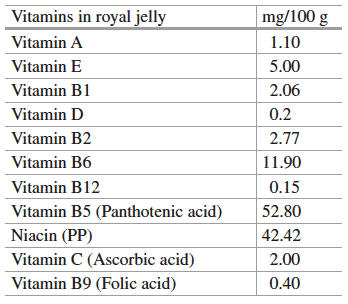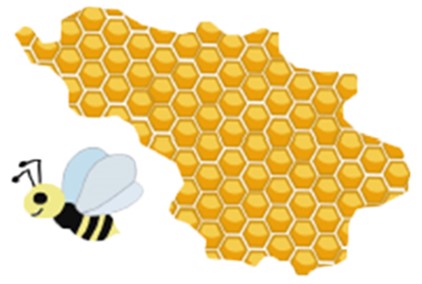Royal Jelly
Note to reader: This page is a reproduction of: HummingBee: https://specializedbeeproducts.com/royal-jelly/ to provide information on the potential uses of royal jelly.
Royal Jelly: The three essential facts
How is Royal Jelly produced?
Royal Jelly is a white secretion from the Hypopharyngeal (HfGld) glands located in the head of worker bees. The Hypopharyngeal glands are developed in the worker bees that are 8-12 days old. These bees, called nurse bees, produce royal jelly to feed young larvae. The larvae are fed this “milky” substance from day 1 to day 3 except for those larvae that will become queens. The queen larvae are fed royal jelly continually during the whole larval period that lasts five days. This substance is rich in proteins, fats, sugars, vitamins, and minerals that are paramount to the development of the bees.

How is Royal Jelly harvested?
Beekeepers induce honey bees to produce larger amounts of royal jelly, then harvest it for commercial purposes. The beekeeper’s transfer larvae from their cells to man-made plastic or wax cells to simulate a developing queen. The worker bees will fill these cells with sufficient amounts of royal jelly that is then collected (See image below).
What is it good for?
Royal Jelly is a true superfood. The literature reports that RJ is composed of sugars, proteins ( 50% of its dry weight), free amino acids (essential and non-essential), peptides (with antioxidant properties), vitamins (see table below), minerals and trace minerals, and probably the most important nutrient in RJ is fats as these are the ones that give Royal Jelly most of its Health Properties. (J.M. Alvarez-Suarez (ed.), Bee Products – Chemical and Biological Properties, 2017)

Vitamin content of Royal Jelly
The nutrients and especially the fatty acids provide royal jelly with the potential for preventing and treating several health issues. Research has found that royal jelly has the following effects: immunomodulation (has positive effects on cancer, allergy, and inflammation), antibacterial, antioxidant, anti-inflammatory, vasodilative, hypotensive, hypocholesterolemic, hepatoprotective, and antitumor activity. See: RJ health benefits.

How to consume it?
Royal jelly comes in two presentations, fresh and lyophilized (dehydrated at freezing temperatures so it keeps all its nutrients). If you want to consume royal jelly fresh, there are some considerations to keep in mind. Royal jelly is very sensitive to environmental factors and so it has to be protected from them. It has to be frozen as soon as it is harvested stored in dark containers so the sunlight does not damage its fatty acids.
The dehydrated version is found in capsules and can be kept on the counter without refrigeration but still away from direct sunlight. There are no official recommendations on how much RJ should be consumed daily. Research suggests that the benefits can be obtained taking 1 to 3 grams daily.
